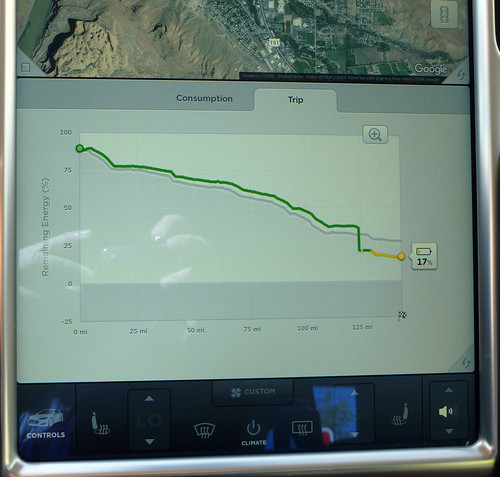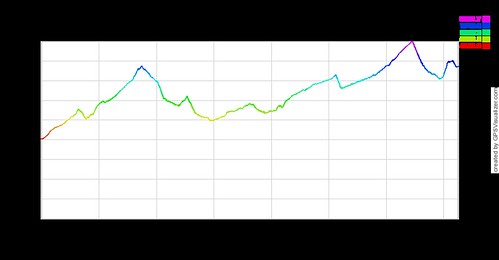Range Anxiety was one of the top things I needed to get over before placing an order for my MS. I spent a lot of quality time playing with
EV Trip Planner -- various regular routes I take, occasional road trips, and a few desired future trips to understand what MPH and elevation does against range and where intermediate charging may be required. I put my Range Anxiety concerns into three buckets. I've eliminated (or dealt with) 2 of them completely, and still working on longer road trips as I travel to new distant locations and experience for myself what weather can do to range, and what charging availability is like. Here's some thoughts and what I've done to reduce my personal concerns:
ERRANDS, DAILY COMMUTES & SHORT TRIPS (no intermediate daily charging)
Range Anxiety for S90s and above IMHO basically becomes nonexistent after a few days of use. With your BEV experience, this won't be a concern ... you'll just want to understand how far a "short trip on a single charge" can be and what the levers impacting range may be -- see "road trips" next.
 I assume of course you don't become addicted to Ludicrous Mode, where all bets are off with what impact that may have on each of your charges.
ROAD TRIPS
I assume of course you don't become addicted to Ludicrous Mode, where all bets are off with what impact that may have on each of your charges.
ROAD TRIPS (intermediate charging required before arriving at your destination)
- It's important to not unexpectedly go nuts with MPH out on the open highway beyond whatever you estimated you were going to do, or your planning will be way off. No matter how much I read about speed being the range killer, until I purposely played with it for myself on longer trips, I didn't have as good of an appreciation. My old cruising speed rules-of-thumb with my former Hybrids, ICE and their sweet spots are NOT the same with my MS.
- MS Energy Monitor and the 17" Trip Graph does a good job showing estimated remaining range at your destination. Put in your next stop (destination or charger location) to the Nav; Keep it visible on the lower part of your 17" and you'll be good to go. It is the BEST thing MS does to eliminate my Range Anxiety concerns; Seems to be pretty dang close; and is far better than watching Rated Range or other alternative estimates MS provides as a substitute for an ICE fuel gauge.
- Unlike my Hybrid/ICE days where I could plan and pretty much count on an ETA within a few minutes most of the time, I think a lot about BEV charging time impact with my MS, and what if an SpC is down or all stalls are full when I get there. Another SpC just isn't across the street like gas stations are for an ICE most of the time. A little more flexibility on the arrival time is now necessary, and long-trip duration IS increased (even if it may be easier on the soul, taking more and longer breaks with a BEV than I'm used to.) Again, EV Trip Planner will help provide an ETA, but you must remember to add in your own estimate for the time it takes for charging at each intermediate stop.
- If traveling to a new destination, I use ChargePoint to identify possible charging locations on the route I'm likely going to travel. This allows me to possibly alter routes ahead of time so I have faster/better charging options available if needed -- especially if there is possibility of inclement weather.
- Elevation changes impacts range more than you may expect or have seen with relatively short trips in your i3. EV Trip Planner does a great job handling this in it's estimates, but my point is, you can't as easily guess the 1-2 MPG impact as I once did on certain trips. There is a new paradigm to become accustomed to with how significant elevation climbs can impact range on your MS (and this compounds at higher MPH).
- Impacts of unexpected weather -- rain, wind (especially heading into and cross-winds), snow/hail, cold temps are considerations that can rather dramatically reduce range beyond what the same trip will consume in beautiful weather conditions. There are many other threads on this with rules-of-thumb estimates (could be a total of 10%-30% impact +/-), but it basically comes down to your risk tolerance in what range impact these things may have and what you want to plan for. In the winter or if storms are in the forecast, I think about this more (I never did in my Hybrid/ICE days other than if I should take my AWD SUV or more fun RWD convertible), and plan for longer charging sessions when estimating destination arrival time.
- If you're going to leave your MS for a longer period of time at your destination and it can't be plugged-in, you do need to think about daily vampire loss a bit, as your battery will loose range every day for a number of reasons. There are other threads on this, but best case I loose 1-3 miles/day, and it goes up from there if e.g. you don't turn the MS energy options on (like I keep on by default), park in extreme cold or hot climates where MS may turn your heat or aircon on to protect the battery, or you forget to circumvent the "USB Phantom Playing" bug. This isn't a big deal to me now, but was until I learned what the considerations were and what levers I had to protect range.
After all that, I'm fine taking a road trip in my MS -- it's a joy; but I do a lot more thinking about it than I used to in my Hybrid/ICE days, and will likely always be that way far more than others here are. It's my nature being a generally risk adverse sorta guy.
HOME EMERGENCIES
An important question I think is, "Is MS your only vehicle, or do you have easy alternative transportation if an emergency arises and you need to GO while you're at home
but may not have sufficient charge in your MS?"
Many MS owners here don't note if they have another vehicle in their stable, that perhaps may still be an ICE -- which provides them great comfort in such a scenario. Me? I consolidated from owing both a Hybrid and ICE, now down to only my MS. I have remote (elderly) family that could call and I need to GO. The same sort of issue could be if a trip to an emergency room or vet came up for anyone. E.g. my closest SpC is 21 miles one-way in the wrong direction if the family call were to come in, so I always want to maintain 50+ RR if I can to get where I need to go. I use my home 80A circuit and HPWC to reduce my range anxiety in this situation given the speed it could charge my depleted battery I needed it.
NORMAL CHARGING METHOD
If I don't have a planned errand the rest of the day, I always plug my MS into my home 80A HPWC each time I park. MS maintains my charge at 90% (or within 8-10 rated range miles of that if parked and not driven for multiple days), starts charging at midnight when my TOU rates kick-in, and because of my dual charges, can theoretically complete a full charge within the 5 hours I have lowest rates available to me year-round.
THE NET
...so the NET of all that for me?
- I keep my MS "at the ready" with a 90% charge in my garage most of the time, and don't think about range most of the time. My S90D does exactly what I wanted, and why I would never consider any other BEV as my single vehicle -- eliminating the need for me to worry about the battery most of the time.
- For longer trips, I prefer planning to have 20% remaining Rated Range where my next charge will come from, but will let it be even lower if arriving at home where I know I can get an immediate charge if need be. If there is inclement weather possibilities, I add something over 10% contingency to that depending on the circumstances.




